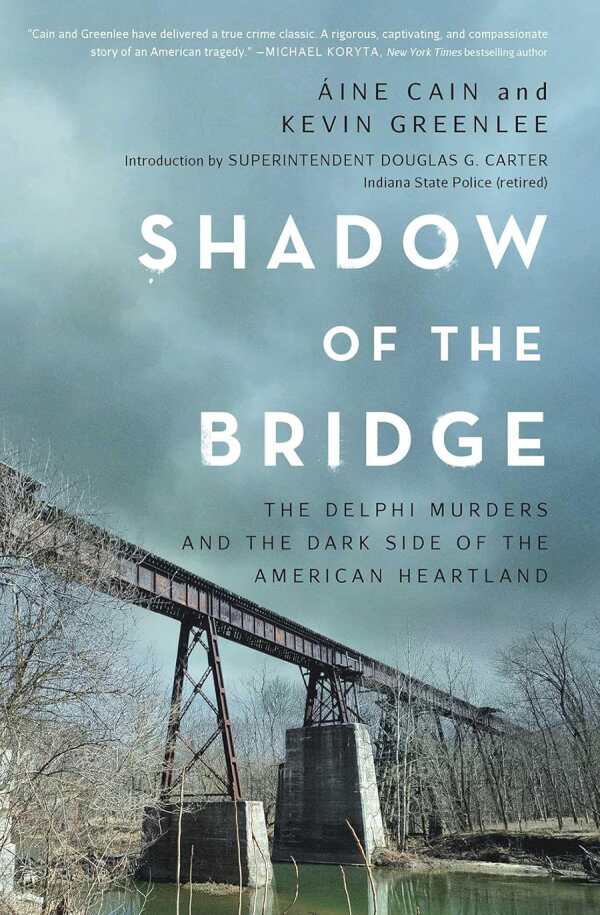Shadow of the Bridge
The Delphi Murders and the Dark Side of the American Heartland
Áine Cain and Kevin Greenlee’s true crime book delves into the Delphi murders, documenting the case from the day of the crime all the way to the conviction of the killer.
When teenagers Libby and Abby went missing on local trails, their tight-knit town sent out search parties. The discovery of the girls’ bodies in the woods launched a lengthy investigation into their murders. Years passed as law enforcement looked into multiple suspects but hit dead ends. In time, an ill-documented tip from the early days of the investigation led to an arrest, and the fight for justice continued in the courtroom.
The first half of the book focuses on the investigation, the second half on the trial. The structure is methodical and chronological, following the entire case from beginning to end. A few tangents arise related to particular suspects and investigators past their involvement with the case, but the bevy of individuals involved is still well-tracked. In form, the text mirrors law enforcement’s approach to solving the case.
The politics within law enforcement are explored throughout, including clashes between the FBI and local police and a sheriff’s election that coincided with the arrest of the main suspect. The narrative is also informed by the perspectives of leading investigators and prosecutors, further emphasizing the long and arduous process of solving a murder case. The pain and grief of Libby and Abby’s families, and of all those working on the case for years, is palpable throughout.
Shadow of the Bridge tells the story of the senseless murders of two girls and their families’ search for justice.
Reviewed by
Julia Dillman
Disclosure: This article is not an endorsement, but a review. The publisher of this book provided free copies of the book to have their book reviewed by a professional reviewer. No fee was paid by the publisher for this review. Foreword Reviews only recommends books that we love. Foreword Magazine, Inc. is disclosing this in accordance with the Federal Trade Commission’s 16 CFR, Part 255.

